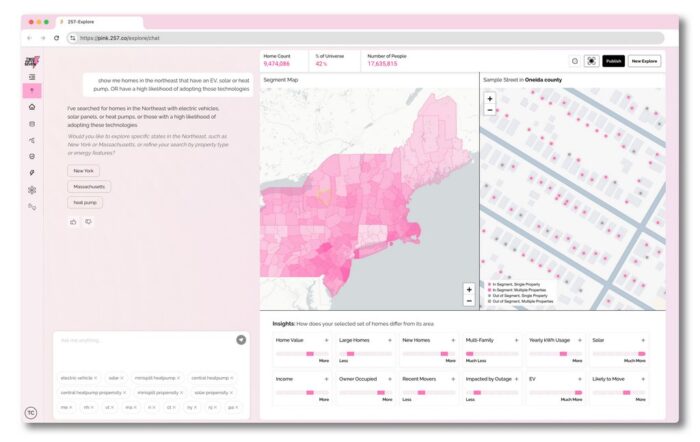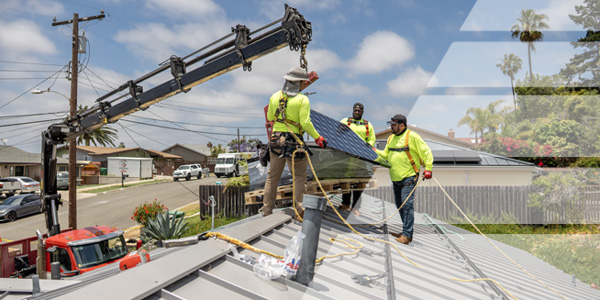257 launches Pink, an AI platform targeting residential energy soft costs
New tool aims to cut customer acquisition costs for solar, storage, and HVAC providers while accelerating U.S. electrification

Residential energy providers in the U.S. spend more than $20 billion each year marketing their products—from rooftop solar to heat pumps—but much of that investment never reaches the right households. A new AI platform called Pink, launched by data company 257, is built to change that.
Pink uses a proprietary database covering all 130 million U.S. homes and a chat-style interface to help providers identify which households are most likely to benefit from upgrades like solar panels, energy storage, or HVAC retrofits. Providers can then target those homes across digital and direct channels, paying only when measurable results are delivered.
“Our mission is simple: to harness data and AI to help energy companies grow faster and accelerate residential electrification,” said Scott Rosenberg, Co-founder & CEO of 257.
Why it matters
The stakes are significant. U.S. households are expected to spend more than $5 trillion on energy products and services over the next decade, averaging about $40,000 per home. Yet providers often struggle to connect with high-potential customers. Pink highlights opportunities such as:
- 135,000 owner-occupied homes in NJ, NY, PA, and MD earning over $100K/year that rank high on 257’s solar propensity scoring.
- 438,000 New England homes still on oil or propane heat that could benefit from heat pump retrofits.
These insights are offered at no cost; activation happens when providers choose to market to these audiences.
“As electricity demand surges with AI, onshoring, and electrification, we need to put every electron to its highest use,” said Mark Kuntz, CEO of Mitsubishi Electric Trane HVAC US. “257’s data-driven tools help pinpoint where advanced heat pumps can replace inefficient resistance heating and outdated ACs.”
Early results in the field
Several case studies show the model already reducing acquisition costs:
- A rooftop solar partner cut its $2,000 customer acquisition cost by one-third using 257’s data tied to California’s SGIP incentive program.
- A community solar provider boosted sales 26% while keeping acquisition costs under $250.
- A heat pump manufacturer found hundreds of megawatts of potential winter peak savings in the Southeast by targeting homes for cold-climate retrofits.
“257 has been a valuable partner in accelerating our growth in the solar and storage market,” said Vinnie Campo, CEO of Haven Energy. “Their platform allows us to quickly and precisely identify the right households, streamline outreach, and improve marketing efficiency.”
AI meets electrification
Tal Chalozin, Co-Founder & CTO of 257, underscored that Pink is trained on millions of real-world home electrification outcomes: “By training AI models on many millions of real world electrification outcomes in American homes, 257 can rapidly grow our clients’ businesses and accelerate residential electrification.”
257 was founded by Rosenberg and Chalozin, both veterans of building scaled media platforms (Roku, Innovid). With Pink, they are now aiming that data and AI expertise squarely at the $500B U.S. residential energy market.
Software Showcase

In 2025, solar sales and design software is moving well beyond static proposal tools. The latest platforms are embedding AI into everyday workflows, linking more seamlessly with financing and permitting systems, and letting contractors tailor designs and processes to their exact needs.
Across this year’s Solar Builder Solar + Storage Software Showcase, three themes stand out. AI is becoming part of the standard toolkit, helping teams flag design issues in real time, predict customer needs, and generate permit packages in seconds. Integration is another major driver, as platforms connect to a wider ecosystem of tools to cut down on duplicate work. And customization is rising in importance, with new ways to set regional defaults, plan for decades of DER scenarios, and expand systems without rebuilding designs from scratch. Scroll through this year’s showcase





Comments are closed here.